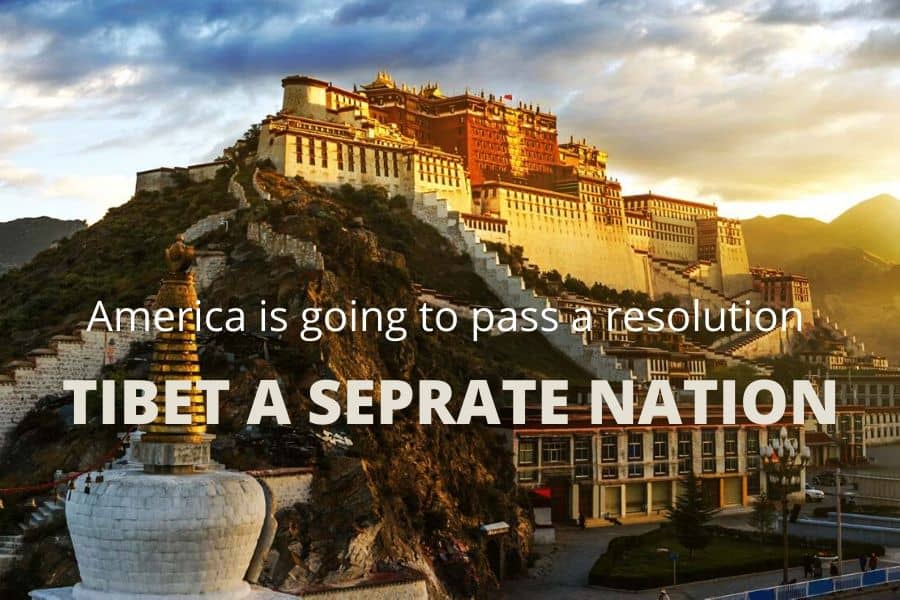The bill is to be introduced in the US Parliament by Republican MP and former Brigadier General Perry Scott of the American Army, the bill is hard to oppose by Democrats, because in doing so they are directly supported by the pro-China protagonist, the Hong Kong Protest and Tibet Will show the accomplice of the Chinese atrocities being committed in
America is going to recognize the illegally occupied Tibet as a separate nation by passing a resolution in its parliament.
If this bill is passed and comes into existence, it would mean direct US funding and assistance to Tibetans seeking refuge around the world and in India, but the most significant impact of this bill will be that the US, China and its CPEC project.
All countries involved will be able to impose sanctions and sanctions, as the CPEC originates from Tibet, and the entire CPEC project will become illegal once the United States recognizes Tibet as a separate nation, because any foreigner who encroaches on the land of Tibet The project and its associated countries will prove guilty of violating the sovereignty and integrity of Tibet.
The official Twitter handle of the US State Department has also consistently raised the subject of Chinese atrocities in Tibet for the past several days, which is proof that the American think tank is not in the mood to take the subject of Tibet lightly and by this China is ready to rein.
By the way, I have full faith that the Modi government’s diplomatic teams will be working and it is possible that they should also be in American contact on this subject, but this is a very appropriate opportunity, if India uses its cards properly then China is very big Diplomatic, strategic, and economic injury can occur.
Tibetan’s view and revolution on Tibet freedom
Since China’s invasion of their country in 1950, Tibetans have never stopped resisting the occupation and the destruction of their way of life. From displaying their banned flag to joining mass protests, Tibetans assert their desire for freedom in the face of severe repression.
Today, this struggle is being carried forward by a generation of Tibetans whose parents and even grandparents do not remember a life free of Chinese rule. Tibetans believe their culture, religion and language are being wiped out by a Chinese leadership determined to maintain its iron grip on Tibet.
Also read:
WHO’s goodwill ambassador is a world-famous singing star. She is also Xi Jinping’s wife….
Their protests are triggered by countless issues, from environmental exploitation and Tibetans being forced off their land to religious restrictions and repressive measures by security forces.
While the circumstances and messages of protests vary, Tibetans repeatedly call for the protection of Tibetan identity, for freedom, for human rights and for the return of the Dalai Lama to Tibet.
Tibetan Uprising Day
Protests often take place around Tibetan National Uprising Day on the 10th of March – commemorating China’s brutal suppression of a mass uprising in 1959.
Large-scale protests across Tibet also took place in the 1980s and in 2008, as Beijing prepared to host the Olympic Games.
Non-violence
The overwhelming majority of Tibetan protests are peaceful, following the path of non-violence established by the Dalai Lama.
However, any form of protest can be met with violence by the authorities so Tibetans continue to seek new ways to defend their identity and basic rights.
HOW DO TIBETANS PROTEST?
New forms of protest
Nomads protect their land by sitting to block the arrival of construction vehicles, young people walk calmly down the street with the Dalai Lama’s banned image and artists write poems and songs celebrating Tibet’s culture and nationhood (see video below). In 2013, Tibetans ordered to fly Chinese flags on their homes gathered the flags and threw them in the river.
Everyday resistance
Acts of resistance can also be subtle, from praying on the anniversary of Tibetan National Uprising Day and secretly carrying pictures of the Dalai Lama to joining together to actively promote Tibetan culture and support Tibetan businesses.
Self-immolation protests
Since 2009, some Tibetans have taken far more drastic action, setting themselves on fire in protest against Chinese rule.
These protests peaked in 2012 when more than 80 took place, but they continue today. More than 135 Tibetans – students, teachers, mothers, even children – have now self-immolated.

